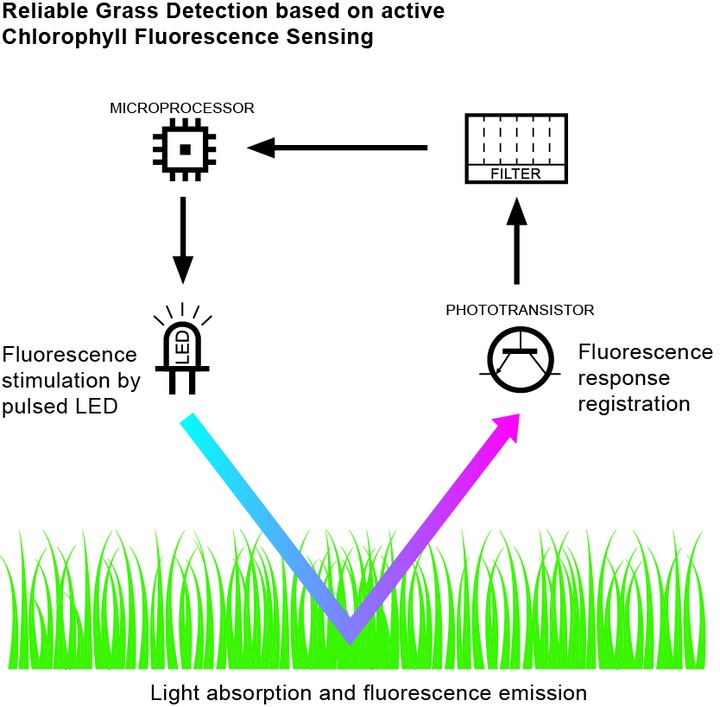A novel Chlorophyll Fluorescence based approach for Mowing Area Classification
 Sensor Schema, Image by Evelyn Rueckert
Sensor Schema, Image by Evelyn Rueckert
Abstract
Detecting cost-effectively and accurately the working area for autonomous lawn mowers is key for widespread automation of garden care. At present this is realized by means of perimeter wire, which leads to high setup and maintenance costs. Here, we propose an active low-cost sensor approach for detecting chlorophyll fluorescence response. Our novel and innovative sensing concept allows for a robust working area detection. The classification is thereby based on the averaging of multiple measurements using LED pulses and sensed fluorescence responses. By selecting only low-cost consumer components for the sensor design, we allow for high-volume production under low-cost aspects. We evaluated our novel sensor system by analyzing theoretically the signal path. Among other we investigated sampling frequencies, sensed surface areas and environmental influences. In real world experiments, we evaluated the performance of our sensor in an exemplary garden and on collected grass samples. Our theoretical and practical evaluations show that the sensor classification result is robust under different environmental conditions, such as changes in lawn quality.